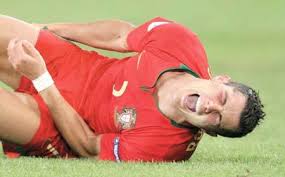Treatment and Prevention of Muscle Injuries
Low Grade Indirect Muscle Strains
Initially following a strain the main aim is to prevent further bleeding and inflammation of the muscle. The first step is to stop playing immediately and rest and ice the affected area. It can also help to elevate the body part to help reduce swelling and apply some gentle compression. Ice the area a couple of times a day for 20min for the first 48 hours. Some gentle physiotherapy including light massage and therapeutic modalities may hasten healing in this time.
Once you are pain free with full movement and able to walk, you can start some light stretches and gentle strengthening. The muscle is still very vulnerable at this time so you are best to get help from your physiotherapist as to when and what is appropriate.
Once you have pain free full range of movement equal to the other side and are back to full strength without pain you can begin some sport specific exercises such as running, kicking, jumping. This is best done under the guidance of your physiotherapist and coach as returning to sport too early can increase your likelihood of re-injury.
Low grade indirect muscle injuries can take between 1 and 6 weeks to get back to usual activity.
High Grade Indirect Muscle Injuries
High grade muscle injuries require prompt specialist review. You will most likely be sent for further tests such as an MRI to assess the extent of the damage. Depending on the muscle and where the significant tear takes place you may require surgery to repair/ reattach the injured muscle or tendon. In most instances this is best done fairly soon after the injury so that the muscle doesn’t retract and shorten making repair difficult.
Following surgery you will require an individually tailored and closely monitored rehabilitation program closely supervised by a physiotherapist and your surgeon. Rehabilitation from complete rupture can take 6 months or more.
Treatment of Direct Muscle Injuries (Contusions)
Players are often tempted to play on following a contusion. Similarly to an indirect muscle injury the first step is to try and prevent further bleeding into the muscle as bleeding causes further muscle damage. Stopping play and resting and icing plus elevation and light compression is therefore the first thing to do. If a contusion is ignored it can lead to Acute Compartment Syndrome which is a serious condition where the pressure in the muscle compartment gets so high that nerves and blood vessels can be damaged if the pressure is not relieved by surgery.
Myositis Ossificans
If there are not enough reasons to see your physio following an indirect muscle strain or a contusion – the risk of Myositis Ossificans may sway you!
Myositis Ossificans is when bruised muscle calcifies (or grows bone instead of muscle). It can cause ongoing pain, increase re-injury risk and greatly delay return to sport. Excessive bleeding due to returning to sport prematurely, heavy massage, alcohol use and applying heat instead of ice to an acute injury are all thought to increase the risk of developing Myositis Ossificans.
Treatment of Delayed Onset Muscle Soreness (DOMS)
This occurs as a result of doing exercise, and is often a general muscle soreness lasting up to 2 days post exercise.
DOMS used to be thought of as a warning sign of potential muscle damage. More recently it has been shown that continuing to exercise through DOMS does not adversely affect recovery or increase the risk of further muscle damage.
It has been shown that things that increase blood flow to the affected muscles can actually help with the pain associated with DOMS – so gentle activity, massage and a warm bath/ shower are useful.
The jury is still out on whether cold immersion is useful in reducing DOMS length or severity.
Prevention of Muscle Injuries
The key to preventing in-direct muscle injuries is to ensure that your muscles are strong AND FLEXIBLE enough to cope with what is demanded of them. This means participating in adequate pre season training and starting slowly and steadily with any new exercise and following injury.
Prevention of direct muscle injuries can be achieved by using sports specific padding as available for your sport.
It sounds simple but working out how strong and how flexible specific muscle groups need to be and how different muscle group relate to each other requires thorough knowledge of the mechanics of the individual sport and also the specific position you play. So it is best to work with your physiotherapist and coach.
Play well and avoid injury!
